Last updated on April 5th, 2024
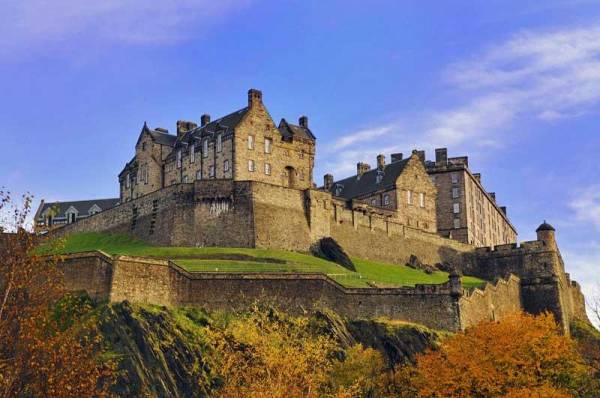
Edinburgh Castle, © Can Stock / StockCube
Visit Edinburgh Castle
Visit Edinburgh Castle. Take a tour of the military barracks, the prison and the royal residence. Edinburgh Castle sits on Castle Rock and has been there since the 1100s. The castle is the most visited tourist attraction in Scotland. The Edinburgh Royal Military Tattoo performs each year for most of August with Edinburgh Castle as a backdrop. Enjoy the sounds of Scottish bagpipes and drums in an extravagant performance that includes fireworks.
Behind Edinburgh Castle, don’t miss the Edinburgh Farmers Market and the concerts at Usher Hall.
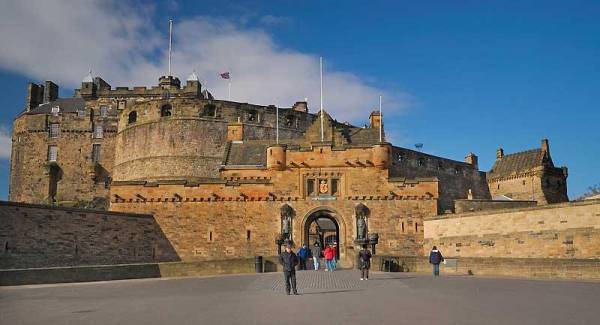
Edinburgh Castle Entrance, © Can Stock / vitalytitov
Visit Edinburgh – Royal Mile
Old Town Edinburgh includes the Royal Mile which is a street running from Edinburgh Castle to the Palace of Holyroodhouse. In typical British fashion, the street changes names as you walk along it. The Royal Mile includes Castlehill, Lawnmarket, High Street, Canongate and Abbey Strand. The Royal Mile has more “Closes” or “Alleyways” than you can imagine. These are narrow pathways where you can shop for a kilt, a tartan and other souvenirs.
Some of the major things to see and do on the Royal Mile are to visit St Giles Cathedral, the Law Courts at Parliament Square, the Scotch Whisky Experience and Camera Obscura World of Illusions. Visit the Real Mary King’s Close to find out what’s under the Royal Mile. A couple of blocks south of the Royal Mile will take you to the National Museum of Scotland and beside it is Greyfriars Church and the Greyfriars Bobby’s Bar. Try one of several Ghost Tours that travel underground and visit Greyfriars Cemetery.
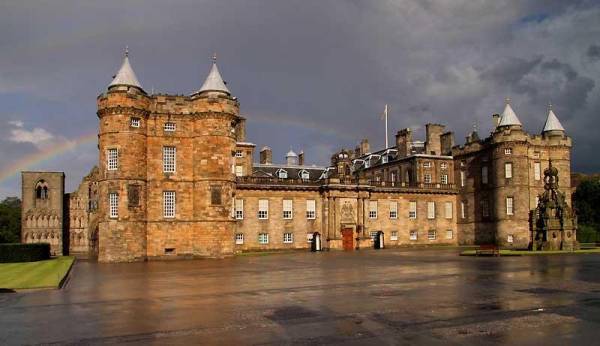
Palace of Holyrood, © Can Stock / Creative_Hearts
Visit Edinburgh – Palace of Holyroodhouse
At the opposite end of the Royal Mile from Edinburgh Castle, you will find the Palace of Holyroodhouse. The Scottish Parliament is just in front of the grounds of the Palace. The Queens Gallery is the first building on the grounds. Right beside the Palace of Holyroodhouse is Holyrood Abbey. The Palace sits within Holyrood Park, so walk up Arthur’s Seat, which is an extinct volcano and former royal hunting grounds.
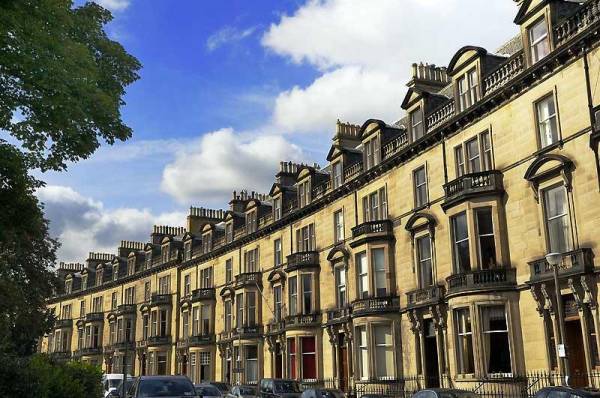
Old Town, © Can Stock / StockCube
Visit Edinburgh – New Town
The North Bridge over Waverley Train Station takes you from the Old Town to New Town Edinburgh. The New Town was built in the 1700s. It is bordered by Queen Street and Princes Street, which has become a high end shopping district. Rose Street in the center of the New Town is where the pubs are concentrated. The New Town includes Dean Gardens & Dean Village, Queen St Gardens & Heriot Row where Robert Louis Stevenson lived.
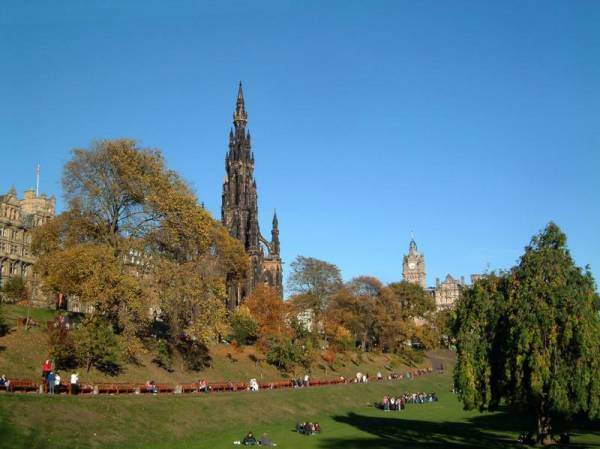
Scott Monument, © Can Stock / iwfrazer
Princess St Gardens
Princess St Gardens sits between the base of Edinburgh Castle and the New Town. In Princess St Gardens, you will find St Cuthbert’s Church, the Ross Fountain and the Scott Monument, commemorating Sir Walter Scott. Excess construction soil from the New Town built up to become the Mound at the eastern edge of Princess St Gardens. The National Galleries of Scotland and the Royal Scottish Academy were built here and a railway tunnel under the Mound takes trains to Waverley Train Station.
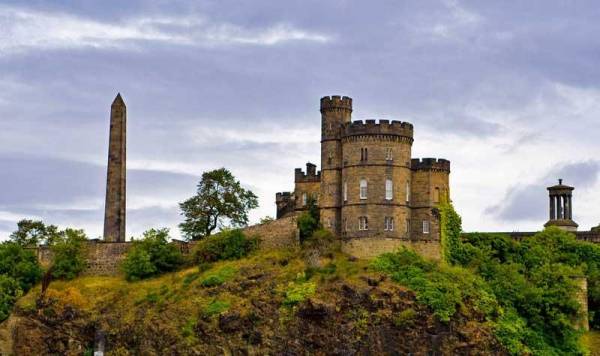
Governor’s House, © Can Stock / rafairusta
Calton Hill
Calton Hill sits at the east end of the Old Town. The Nelson Monument is on Calton Hill, where is honors Admiral Horatio Nelson. Also in Calton Hill are the Calton Hill Parthenon National Monument, the City Observatory, the Dugald Stewart Monument and the Governor’s House. At the edge of Calton Park is Edinburgh Playhouse.
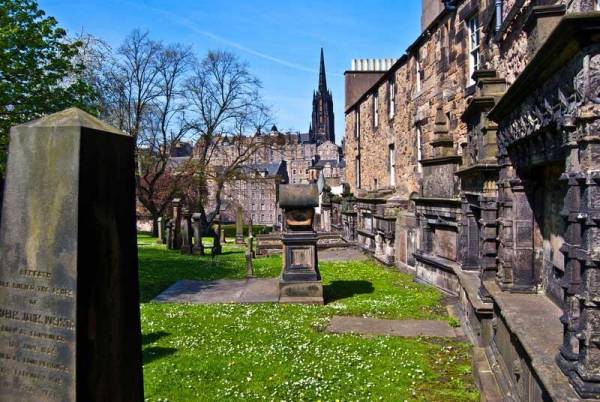
Greyfriars Kirkyard, © Can Stock / Jule_Berlin
Visit Edinburgh – Hotels
- Dunedin Apartments
- Radisson Blu Hotel
- Abercorn Guest House
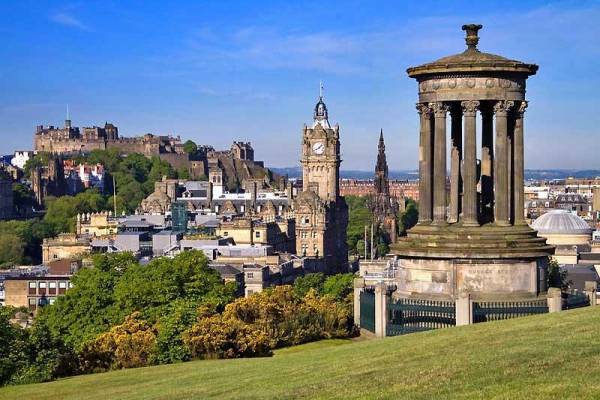
Calton Hill, © Can Stock / Creative_Hearts
Visit Edinburgh – More Sights
- Royal Botanic Garden Edinburgh
- Watch Edinburgh Rugby at Murrayfield Stadium.
- Craigmillar Castle – one of the oldest castles in Scotland, with views over the city.
- Gilmerton Cove – underground passageways, just outside the city
- Edinburgh Zoo
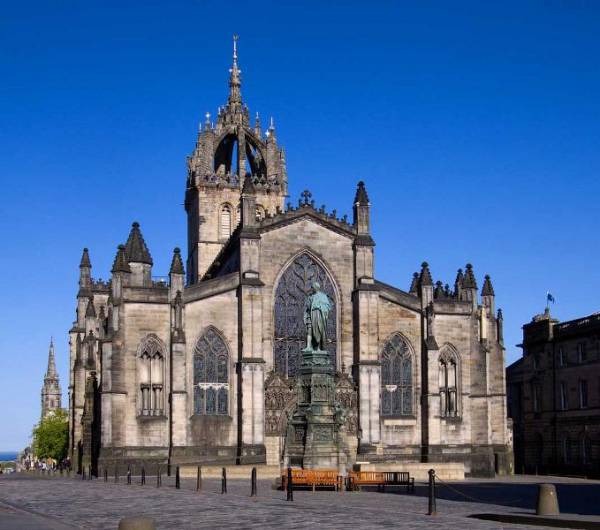
St Giles’ Cathedral, © Can Stock / Creative_Hearts
- Royal Yacht Britannia – tour the former Royal Yacht now moored permanently in Edinburgh.
- Portabello Beach
- Attend various festivals, especially the International Festival and the Edinburgh Military Tattoo, both in August.
- Hogmanay – New Years’ street party along the Royal Mile.
- Forth Rail Bridge – cross the Firth of Forth about a half hour from town.
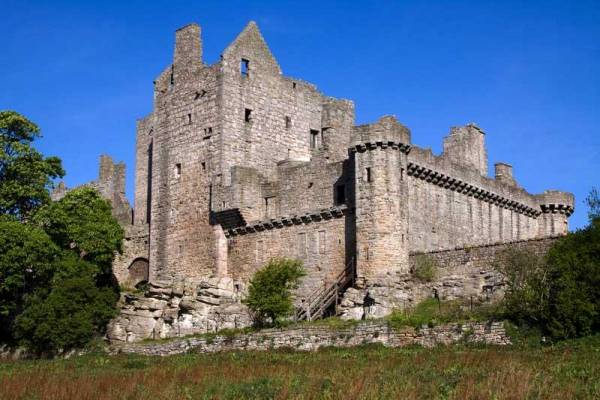
Craigmillar Castle, © Can Stock / Creative_Hearts
Royal and Ancient Golf Club of St Andrews
Travel north 1.5 hours to “The Home of Golf”, St Andrews Links. The famous Royal and Ancient Golf Club of St Andrews was involved in making the rules of the golf. The Old Course at St Andrews is one of the oldest courses in the world and is open to the public. Many famous visitors have visited St Andrews. Also see the ruins of St Andrews Cathedral, St Andrews Castle, the Old Course Hotel and St Andrews University.
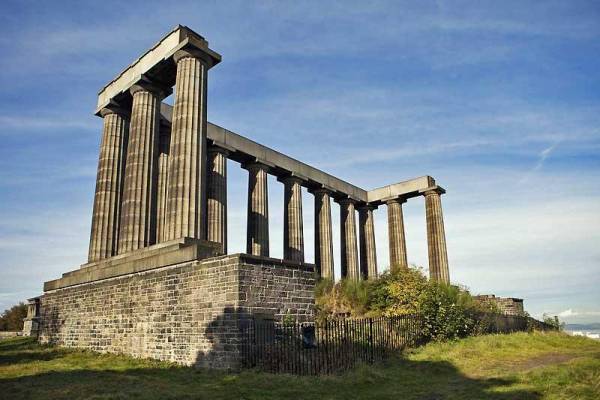
National Monument, © Can Stock / searagen
Savor the Tastes of Edinburgh
- Haggis – sheep’s heart, liver, lung, onion and other ingredients encased in sheep’s stomach or sausage casing.
- Scotch Broth – soup with barley, vegetables, meat and bone marrow.
- Cock-a-Leekie – chicken and leek soup.
- Kippers – split whole herring, for breakfast.
- Scottish shortbread
- Scotch Whisky – Scotland’s national drink
- Irn-Bru – a bright orange colored soft drink that tastes a bit like bubble gum with a slight bitter after taste. This is Scotland’s non-alcoholic national drink.
- Greyfriars Bobby’s Bar
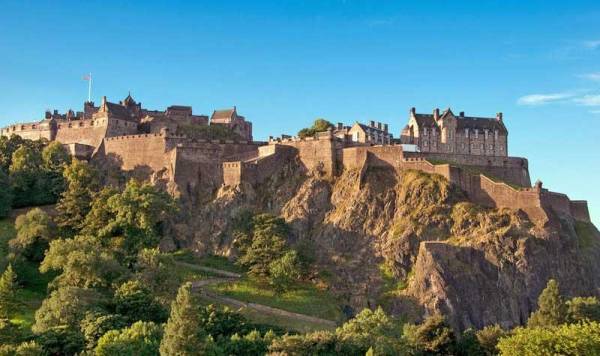
Edinburgh Castle, © Can Stock / vitalytitov
Get to Edinburgh
You can get to Edinburgh by flying to Edinburgh Airport (EDI). The airport is about a half hour by cab from the Old Town and Edinburgh Castle. You can get downtown on the Edingburgh Trams in about 40 minutes. The trams run every 7 minutes from the Airport to St Andrew Square near Waverley Train Station. Waverley Station is in the Old Town within a few minutes walking distance of Edinburgh Castle. You can also take the 100 Airlink bus from the airport to St Andrew Square next to Waverley Station. The 100 Airlink runs every 10 minutes and takes about a half hour.
Waverley Station connects rail passengers to London King’s Cross in about 5 hours. Bus and taxi are the best options for transportation around Edinburgh, but many of the sights are located in the Old Town along the Royal Mile. The Royal Mile runs between Edinburgh Castle and The Palace of Holyroodhouse.
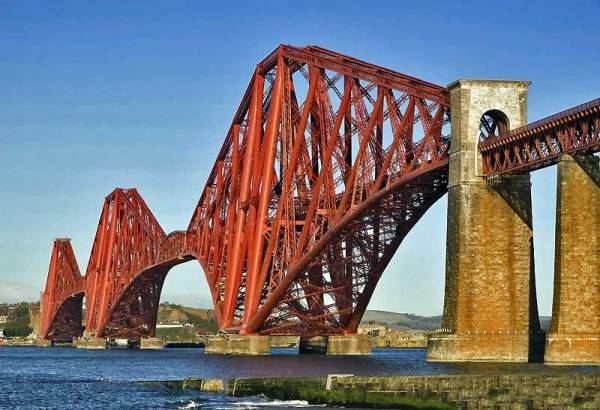
Firth of Forth Bridge, © Can Stock / ramonespelt
Cruise to Edinburgh
You can cruise to Edinburgh in the summer with a number of major cruise lines. Try to make sure the Edinburgh Royal Military Tattoo is performing before you pick your cruise date. If you cruise to Edinburgh you will probably dock at Ocean Terminal in Port Leith, which is a few minutes from Old Town Edinburgh and Edinburgh Castle. Bus service on Skylink 200 is available from Ocean Terminal to the Old Town.
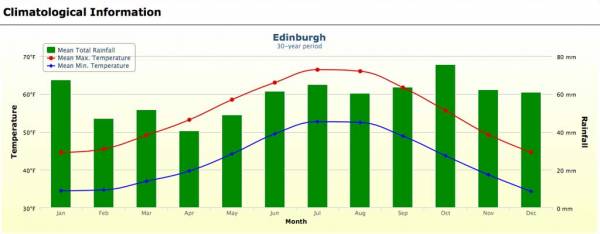
Edinburgh Weather Graph
Edinburgh Weather
The Edinburgh weather is a maritime climate. The average high temperatures from June to September are about of 17 C (63 F). The summer lows average about 10 C (50 F). Edinburgh weather in winter has temperatures that seldom go below freezing, but colder periods are possible. Rainfall is spread evenly throughout the year. Summer is the height of the tourist season and August is the most popular time to visit Edinburgh.
Visit Edinburgh Background
Edinburgh is the capital of Scotland. The phrase “burgh” in Scottish means “town” or “village”. Edinburgh started in the 1100s and nearly half a million people live there. In the 1600s Edinburgh made great efforts to protect itself from British rule. In 1707 the city united with Britain. Its Old Town and New Town are both UNESCO World Heritage Sites. The most famous historical figure for Edinburgh is likely Mary Queen of Scots, who ruled in the mid 1500s.

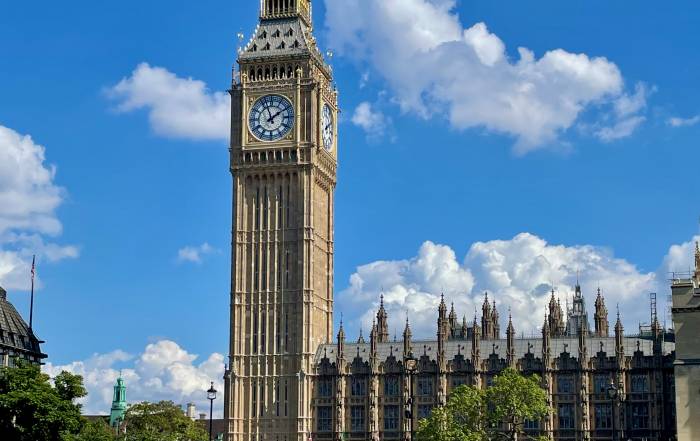
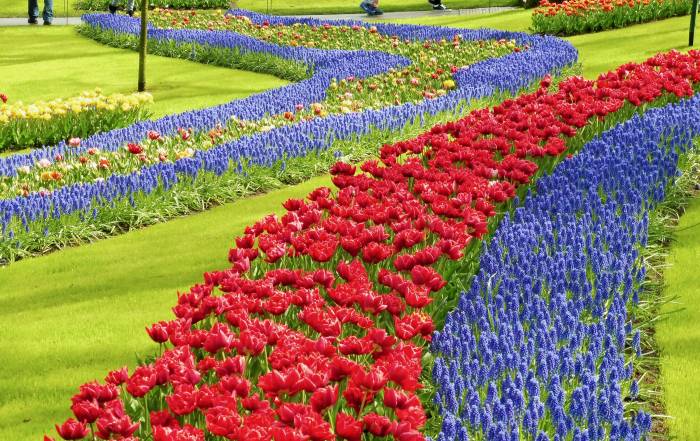
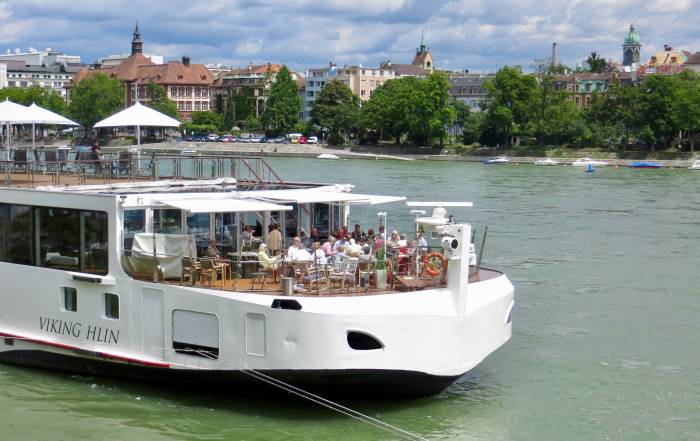
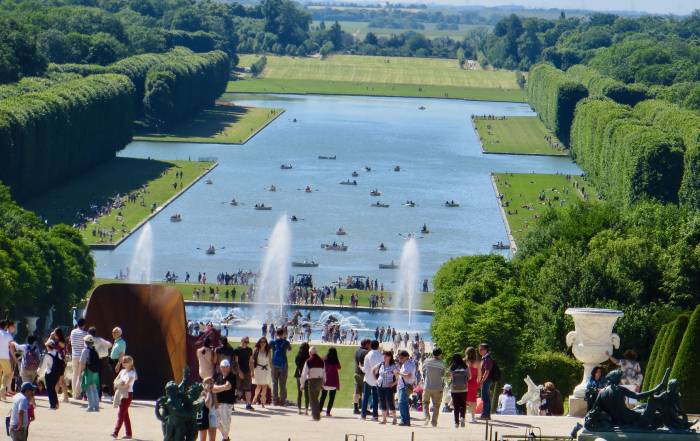
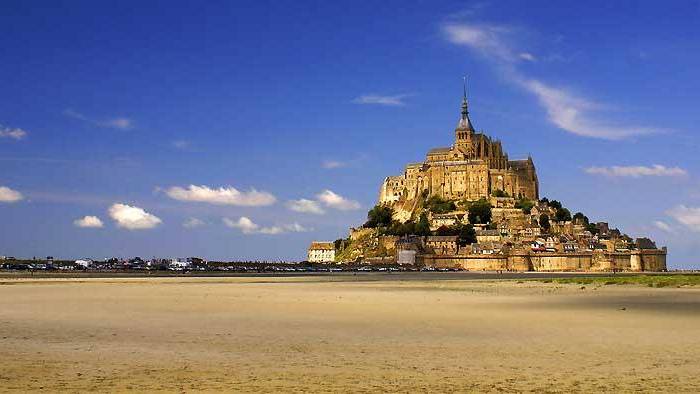
Leave A Comment